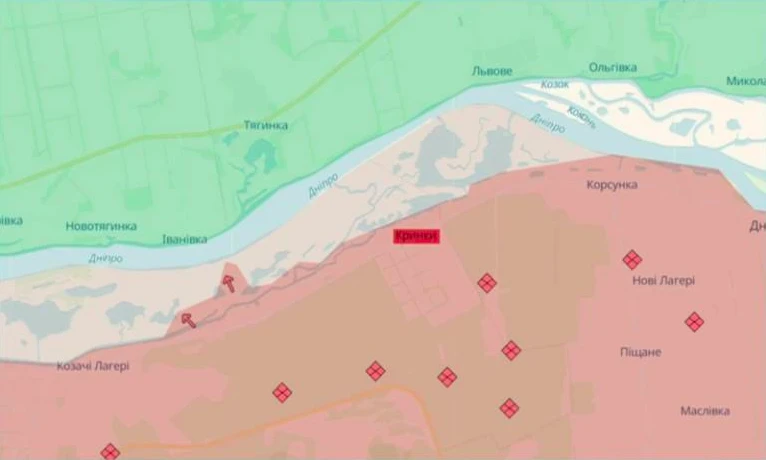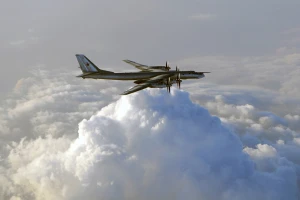
Ukraine's moves in Krynky, Kherson region divert major Russian forces. Serhiy Zgurets’ column
The presence of Ukrainian marine units near Krynky created operational uncertainty for the Russian forces, as it was seen as a move to establish a bridgehead for potential offensives, including an attack on Crimea
Frontline situation - Krynky
On July 18, the Ukrainian military command finally assessed the situation on Dnipro's left bank in the Kherson region, particularly in the village of Krynky. Amid media reports of the military's withdrawal from Krynky, data on the losses of Ukrainian soldiers in the battles for this area have emerged.
The spokesperson for the Tavria troop grouping, Dmytro Lykhoviy, said that the situation in Krynky is not as critical as some media bloggers interpret it, and that the Ukrainian Defense Forces continue to perform combat missions on the left bank of the Dnipro River, including near Krynky. The spokesperson for the Tavria troop grouping said that the village was completely destroyed by Russian shelling and there is nowhere to hold the line, so Ukrainian units have withdrawn to other footholds. Lykhoviy said that combat operations on the left bank of the Dnipro River continue.

Krynky is located 30 km east of Kherson and about 2 km from the Dnipro River. This village stretches for several kilometers along several roads. Combat operations involving infantry and other units of the Special Operations Forces began on October 14 last year. The maximum number of marines was only a few hundred at peak moments in this section of the front.
What consequences did this have? We need to draw intermediate conclusions because the fighting in Krynky is an element of all the fighting from Oleshky and Kozachi Laheri to Krynky. What conclusions can be drawn? First of all, it made it more difficult for Russia to shell villages on the right bank and Kherson city. It deprived Russian troops of the initiative and the ability to carry out raids on the right bank, and such risks existed at the time.
The actions in Krynky and other areas of the left bank drew away significant Russian forces that could have been used in other areas. A situation of operational uncertainty was created for Russia, as the presence of Ukraine's marine units was perceived by both Russia and foreign experts as a step to create and expand a bridgehead for further offensive actions, including an attack on Crimea.
This may sound unrealistic, but Russia reacted to it because it was afraid of such an offensive. The actions of Ukrainian units raised concerns that they could divide and constrain the Russian Dnepr group under General Teplynsky. As a result, Russia was compelled to deploy reserves to the area, reinforcing it with paratroopers. The Dnepr grouping has increased in size since Ukrainian marines began their operations.
The Russian army attempted to assault Ukrainian units with tanks, armored vehicles, and infantry, but all were destroyed. This operation resulted in significant losses for the Russian forces due to the effective coordination between Ukrainian marines, artillery, and drones from the right bank of the Dnipro. During this time, new tactical techniques were developed, and the use of drones was enhanced.
It is worth mentioning that the Magyar Birds operated in this section of the front. This unit grew from a company to a battalion and then a regiment. Technological solutions using electronic warfare and FPV drones led to the Russian troops suffering significant losses. We have developed technological techniques that are now being used in other areas of the front.
We understand that every line taken or abandoned has its own logic and price. I think the battles on Dnipro's left bank in Krynky and Oleshky are unique in their complexity. For Ukrainian soldiers who fought there, these battles were perceived as hellish. Often, it was a one-way trip, because both rotation and evacuation were extremely difficult and sometimes impossible.
Slidstvo.info published data showing that 262 Ukrainian soldiers were killed and 788 went missing during the fighting on the left bank of the Dnipro River in Krynky, which is a very high price to pay.
The operation on the left bank of the Dnipro last year and now has logic and expediency, but the main burden of choices and actions depends on the commanders, their conscience, and their skill in balancing the purpose of the operation with the price to be paid for it.
On military startups
And then we will talk about military startups and technological projects that can significantly enhance the defense and offensive capabilities of the Ukrainian Armed Forces. Nowadays, technological breakthroughs are made both by the state and by private investment, which is more sensitive to opportunities, prospects, and opens up certain ideas. New venture funds are emerging in Ukraine that invest in military developments. Let's talk about such activities using the example of the Unbreakable venture fund.
Dmytro Dubrovskyi, co-founder of Uklon and the Unbreakable Foundation, a defense-tech investor, said that together with his partners, they created the Unbreakable Foundation, which amounts to $2 million. This money was earned by the co-founders and invested in a fund that will be used to invest in startups in both the military and defense-tech sectors. The main condition is to invest in technologies that bring Ukraine's victory closer. As of today, two startups have already been invested in: Buntar Aerospace and Ailand Systems. Ailand Systems has developed an interesting technology for de-mining Ukrainian territories, where drones detect mines according to a certain algorithm. Accordingly, it is much easier for sappers to work when there is detection. Realizing that we have large areas mined and that this technology will save the lives of sappers, the Foundation invested in this technology.
The defense-tech investor noted that the fund usually invests between $200,000 and $500,000 in a startup. The investment in Ailand Systems was over $200,000. The company will use these funds to develop the serial production of the product, as it has already been field tested. Further improvements, modernization, and implementation of new technical solutions will follow. Buntar Aerospace has a startup focused on a reconnaissance aircraft that can take off and land vertically. This aircraft can fly 50-70 km. This is a very technological niche, so the fund is also interested in this project. Buntar Aerospace also has software solutions, including a mission planner for reconnaissance UAVs.
Dubrovskyi noted that these companies are currently completing field tests of their projects, and combat missions are expected in the fall. If the military buys and orders certain things in large quantities, it means there is a need, so we can invest in it. So far, there is no close cooperation between the Unbreakable Foundation and the Defense Ministry, but there is fruitful work with the BRAVE1 initiative (a cluster for the development of military technologies in Ukraine).
After talking with Mr. Dubrovskyi, let's briefly mention that there are other unmanned systems that are currently being actively tested by various teams. One such initiative is a jet drone called Bullet. This is an aircraft-like vehicle that has a speed of about 130 km/h so far. I hope that this speed will be higher because this device is designed to attack enemy drones and helicopters. This project is being developed by a team whose name we do not yet know, but we see that this area of intercepting Russian drones is a priority. We hope that in some time there will be a serial model of such a jet strike drone interceptor and the Ukrainian Armed Forces will have a means to effectively combat enemy reconnaissance drones, including Orlans and Zalas.
- News












































